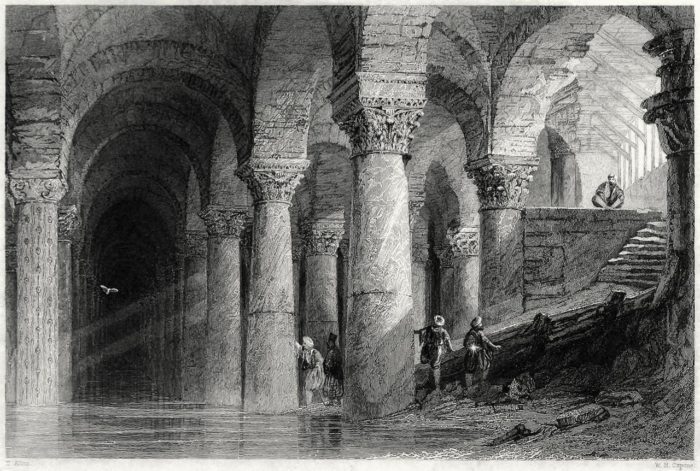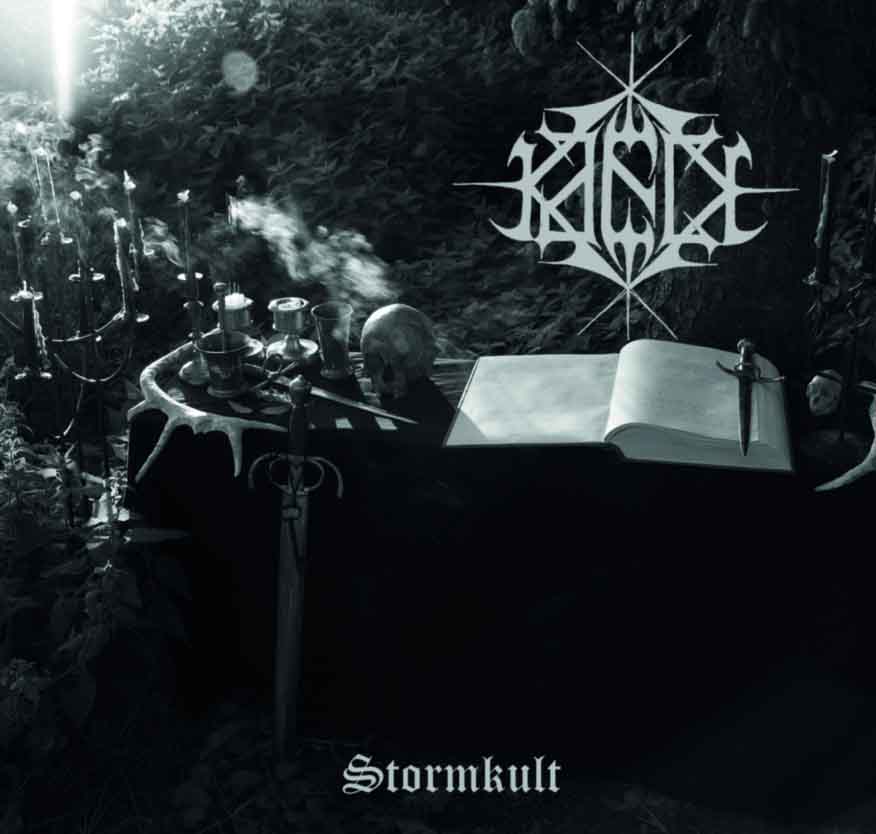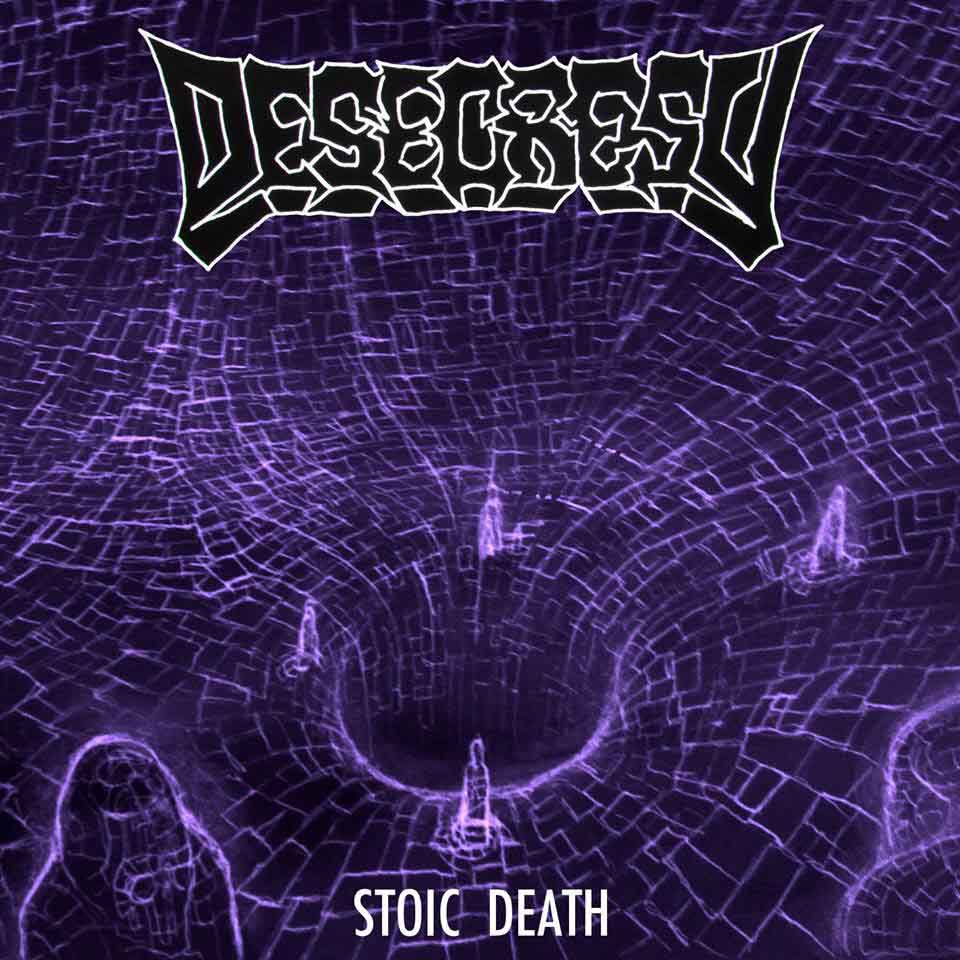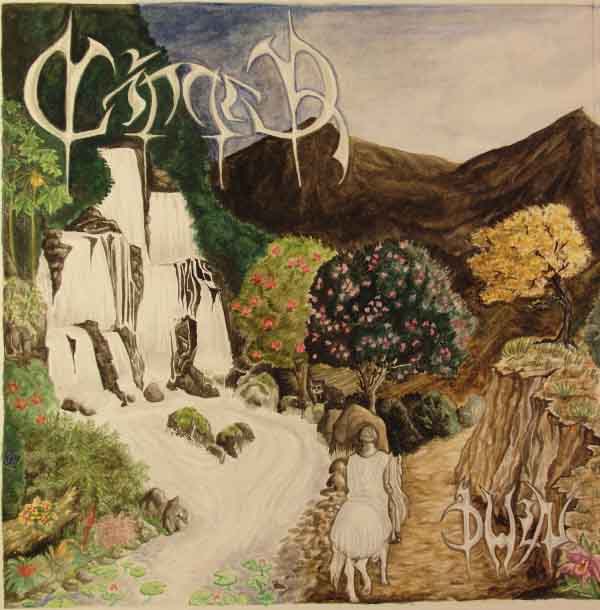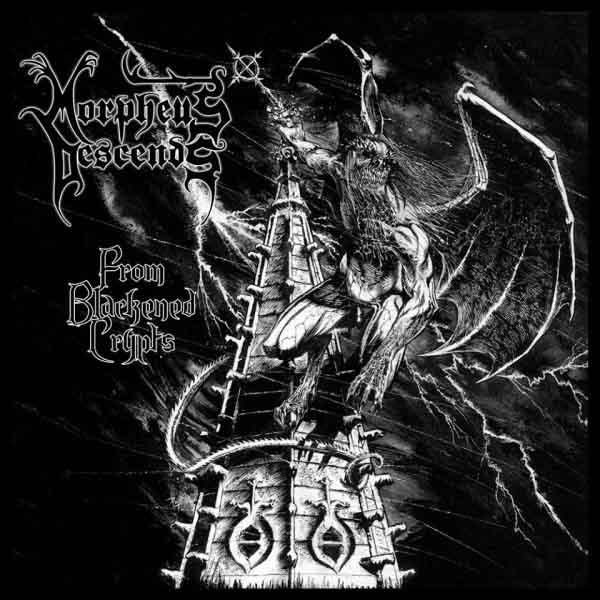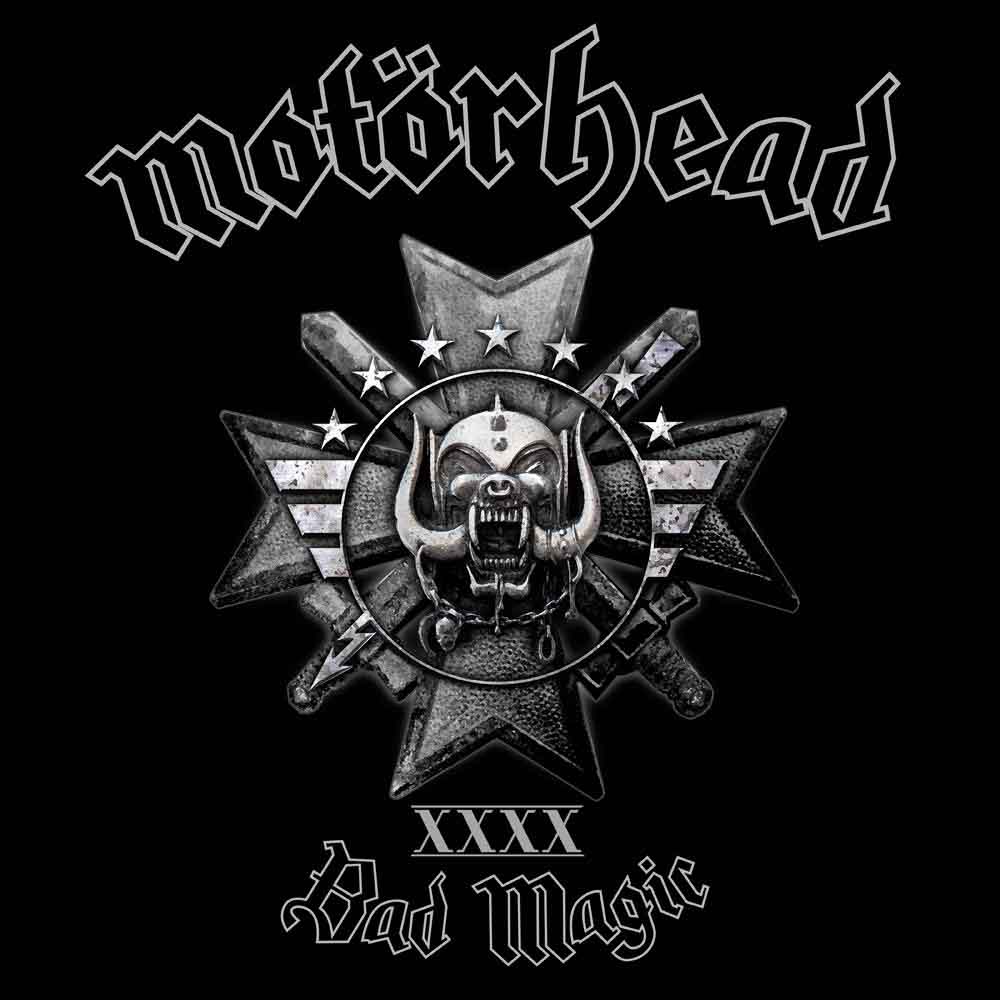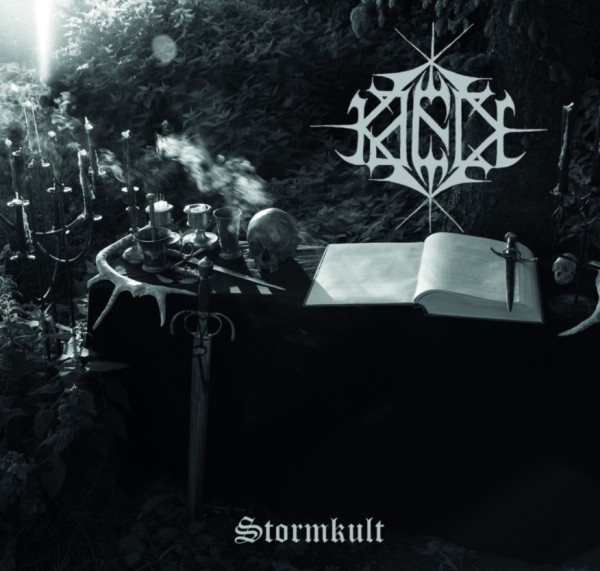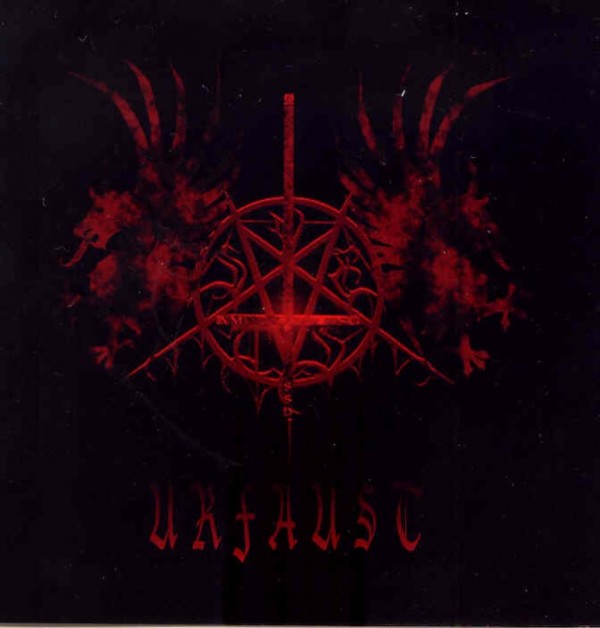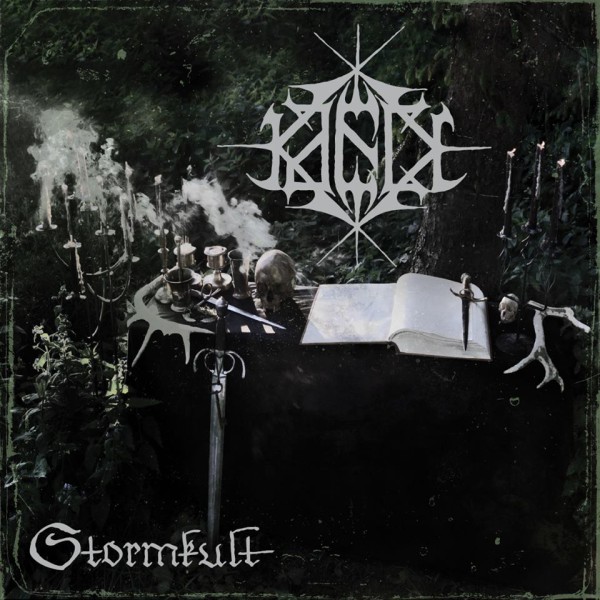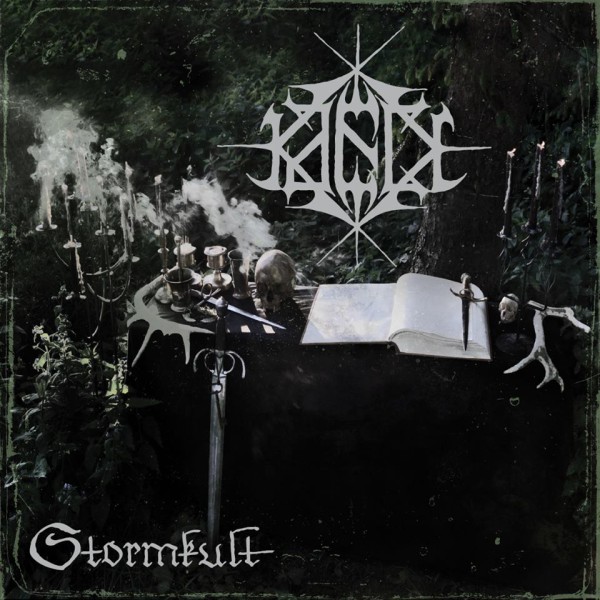
Following up on Brett Steven’s review of Kaeck’s Stormkult, the present review starts off where he left off: the fusion of styles in Stormkult that are brought together under one unifying banner. The truth is that trying to split this album into its influences is almost pointless as it broke them down to such atomic and almost indivisible parts to build something that is completely their own. We may hear a trace of what Sammath or Kjeld sounds like almost only because we were told that members from these bands participate here. Otherwise, we would be hard pressed to find concrete influences.The previously mentioned review does a very good job at describing the album both in an evocative way, as in describing a picture and by summoning the presence of other bands as to give the reader some idea of how Kaeck goes about building their music, but in no moment does this imply that Kaeck actually sounds like any of them (except, of course, for the fact that they are all black metal).
Kaeck’s “sound” can be broken down into the layered functions that the instruments fill. First we have the drums at the bottom. These are used more like a heartbeat rather than a metronome. A typical background black metal drum pattern will keep the beat with standard beats, but here the drum patterns are reduced in such an intentional manner to something that can only be described as primitive battle drums whose sole function is to drive deep and resounding vibrations in the martial host’s body. Guitars distorted to the poing of disfugurement provide the thickness of the sound, notes and chords themselves being barely recognizable through the fuzz and chaos of frequencies bent to the whims of an unfathomable will. Riding the maelstrom of riffs comes a coarse voice which simultaneously commands us out of lethargic inaction and commends us to embrace the defying and righteous — though heretical — mission of the Angel of Light. A luminescence that, contrary to what the waylayer Paul would have us believe, is in all truth the true essence of that entity shrouded in damned robes of exhile. A garb worn as camouflage to avoid the tyrannical embrace that paralyzes thought from within in exchange for blissful mental atrophy. Echoing across the catacombs that serve as an imaginable setting for Stormkult we can hear a keyboard that outlines short melodic motifs counterpointing and delineating the whole in a loop, only changing with the tempestuous guitar and arising from within its bowels only to go back to them as a lost, desperate soul attempting to escape imminent destiny only be pulled back by a reality that admits no denial.
What we have now, is a static picture of Kaeck. But the enduring power of Stormkult resides in the living movement through temporal dimension that music is. Affirming dominance over the elements of music, bending them in an abuse characteristic of a necromancer trespassing the bounds set by divine order, we hear the violent plight of Godless Arrogance coming to fruition in the reining in of a beast of unnatural origin. The experience through which Kaeck hauls our terrified soul appears at first as an indistinguishable blur. It is only after our eyes have time to adjust in the dim light pushed into corners by an overpowering darkness that we see a pattern emerge in the frescoes on the walls splattered by blood old and new. And from the synchronized layers of sound we hear subtle transformations that a moment ago seemed to comprise only one motif in repetition. Once we latch on to the combat-inciting beats, and the voice guides us over the patterns of the riffs as the melodies produced in the keyboard and a soloing guitar move in and out of our field of view, we start to envisage this humble temple in all the dimensions conceived by its creator: the evolving motifs on the timeline as well as the entities represented in the melodies existing as reflections of the riff itself on parallel worlds.
While any music can rightfully pronounce themselves as comprising all necessary dimensions, seldom do creators actually think fully in all of them. It is usually the case that the whole is forgone to give prominence to one of the elements, no matter what is claimed. When the goal is the whole, all the parts are cared for in an obsessive manner in attention to how they affect the whole and not according to how they stand on their own which often leads to an imbalance in the relation of the parts that obstructs communication, for what is intended by the whole is either distorted or fades into the background to give way to the prominence of egos. These considerations must include the temporal relations of things, it is not just how the instruments in the present riff interact, but how they interact with different parts throughout the song. Balance, then, does not imply a static situation where everything is still as a result of equating forces pulling in different directions, rather, a stable condition is attained without which a clear direction would be very difficult to follow. And although one should also keep in mind that there is no one singular formula to approach composition, each tradition has its guidelines based on conventions without which music would only be what modern popular music wants it to be: personalized pleasure fountains.
Kaeck approach this ideal of balance in all dimensions from the particular filter of minimalist and raging black metal. In Stormkult the tempered voices of the outward chaos of late Sammath and the adventurous impulse of Kjeld are not just channeled but fused and distilled to the point where only the most basic of essentials remains. This is why although we cannot actually hear Sammath or Kjeld in the music (apart from predictable superficial observations like “the vocalist is the same” or “it’s also aggressive black metal”), their approaches to music construction — from the naturalistic violence of Sammath that defines consistent yet distinct riff-writing to the refined delicacy of movement of Kjeld provided by a melding of sections through simple yet perspicacious rhythmic and melodic devices that makes such changes almost imperceptible, Stormkult is the titan born of a god and a primordial monster.
https://www.facebook.com/Kaeckhorde?fref=ts
7 CommentsTags: 2015, Black Metal, kaeck, kjeld, minimalism, sammath, Skym, Stormkult
